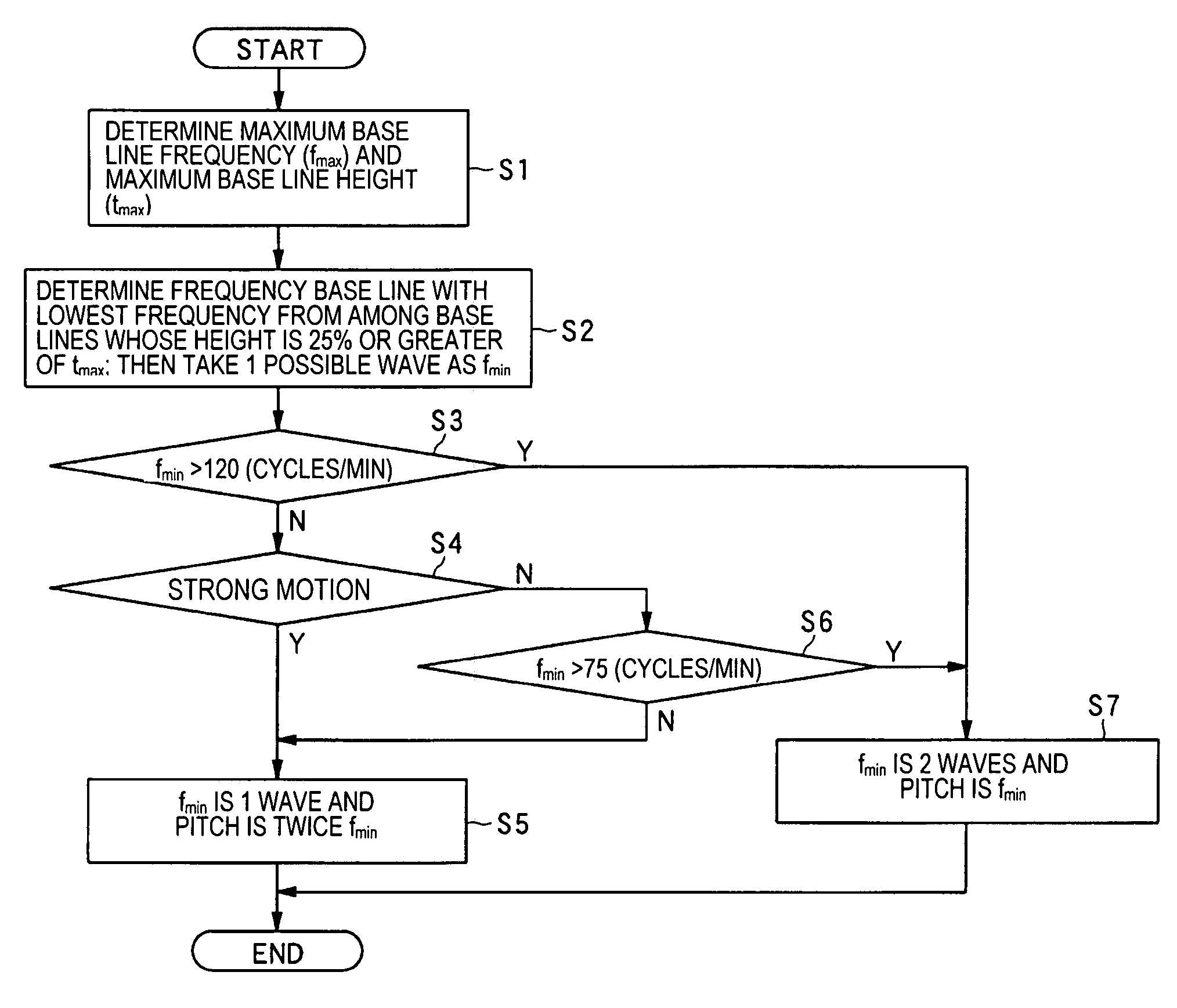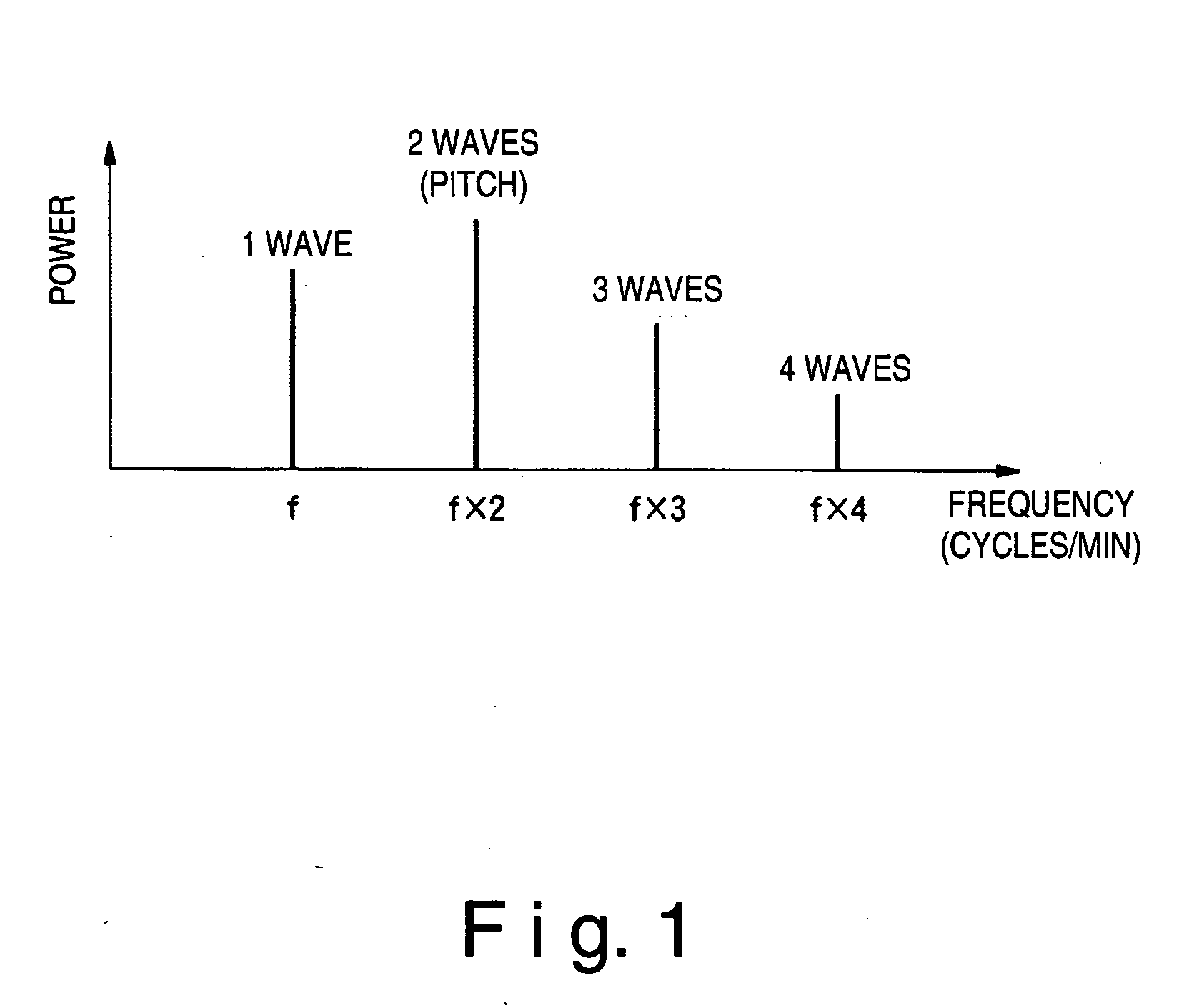Body motion detection device, pitch meter, wristwatch-type information processing device, method for controlling thereof, control program, and storage medium
- Summary
- Abstract
- Description
- Claims
- Application Information
AI Technical Summary
Problems solved by technology
Method used
Image
Examples
second embodiment
[0125] FIG. 24 is a schematic structural block diagram of the pitch detection device 500 of the The pitch detection device 500 basically comprises a first body motion sensor 501, a body motion signal converter 502, a body motion signal storage section 503, a body motion signal calculating section 504, a second body motion sensor 505, a body motion signal extracting section 506, a pitch calculating section 507, and a liquid crystal display device 13.
[0126] The first body motion sensor 501 and the second body motion sensor 505 are equivalent to the first acceleration sensor A and the second acceleration sensor B, respectively, described above. In other words, the first body motion sensor 501 is preferably oriented so as to have the direction of sensitivity in a direction substantially perpendicular to the axial direction of the arm. Also, the second body motion sensor 505 is preferably oriented such that the direction of a straight line that connects the shoulder joint and the wrist ...
third embodiment
[0134] Referring now to FIGS. 26-29, the third embodiment of the present invention is explained. The third embodiment of the present invention is configured to combine the output signals of the first and second body motion sensors in the same manner as in the second embodiment. In addition, the third embodiment involves varying the amplification factor in the process of amplifying the two output signals to prevent one output signal from being obscured by the other output signal prior to combining the outputs of the first and second body motion sensors. Furthermore, this embodiment involves using the same amplitude range for the output signals of the first and second body motion sensors. Thus, the third embodiment has basically an identical configuration with the second embodiment, except that the body motion signal converter 502 of the second embodiment is replaced with the body motion signal converter 550 of the third embodiment. In view of the similarity between the first, second ...
fourth embodiment
[0144] Referring now to FIG. 30, the fourth embodiment of the present invention is explained. The fourth embodiment is configured to combine the output signals of the first and second body motion sensors in the same manner as in the second embodiment. Additionally, the fourth embodiment involves changing the amplification factor in the process of amplifying the two output signals to prevent an output signal from being obscured by the other output signal prior to combining the output signals from the first and second body motion sensors. Thus, the fourth embodiment has basically an identical configuration with the second embodiment, except that the body motion signal converter 502 of the second embodiment is replaced with the body motion signal converter 600 of the third embodiment. In view of the similarity between the first, second and fourth embodiments, the parts of the fourth embodiment that are identical to the parts of the first and second embodiments will be given the same re...
PUM
 Login to View More
Login to View More Abstract
Description
Claims
Application Information
 Login to View More
Login to View More - R&D
- Intellectual Property
- Life Sciences
- Materials
- Tech Scout
- Unparalleled Data Quality
- Higher Quality Content
- 60% Fewer Hallucinations
Browse by: Latest US Patents, China's latest patents, Technical Efficacy Thesaurus, Application Domain, Technology Topic, Popular Technical Reports.
© 2025 PatSnap. All rights reserved.Legal|Privacy policy|Modern Slavery Act Transparency Statement|Sitemap|About US| Contact US: help@patsnap.com



